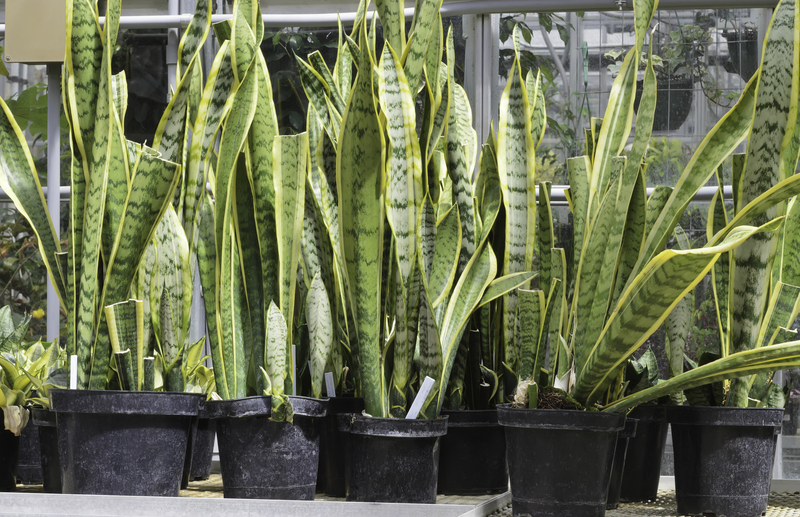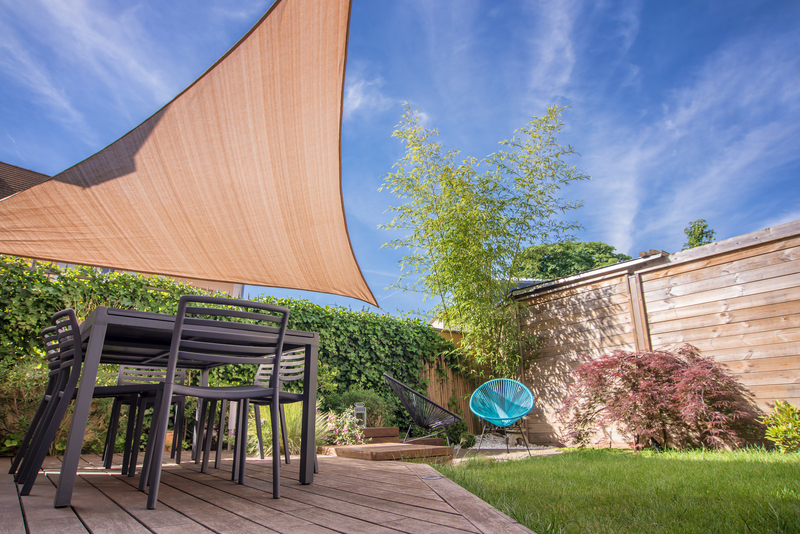Achieve Weed-Free Zones with These 3 Tactics
Posted on 27/05/2025
Maintaining a weed-free garden or lawn is often seen as an overwhelming chore, but with the right techniques and dedication, you can enjoy lush, healthy, and tidy outdoor spaces year-round. In this comprehensive guide, we'll walk you through three proven tactics to achieve weed-free zones in your landscape. Whether you're a seasoned gardener or a landscaping newbie, these strategies are effective, eco-friendly, and tailored for real-world results.
Why Is It Important to Keep Your Lawn and Garden Weed-Free?
Weeds compete with your plants for essential resources such as water, nutrients, sunlight, and space. In addition to their unattractive appearance, persistent weed infestations can damage your lawn's health, impact your harvests, and even introduce pests or diseases. Establishing dependable weed-free areas not only boosts the curb appeal of your property but also safeguards the investment of your time and money in landscaping.
- Enhanced plant health and productivity.
- Improved soil structure.
- Reduced pest and disease risks.
- Lower maintenance requirements in the long run.
- Increased property value and aesthetic appeal.
Now, let's explore the top three methods to achieve weed-free spaces and transform your surroundings into pristine, inviting zones.

Tactic #1: Use Mulching to Smother Weeds
Understanding the Power of Mulch
Mulching is one of the most effective and environmentally friendly approaches for achieving weed-free beds and borders. By covering exposed soil with a protective layer, you deprive weeds of the light they need to germinate, regulate soil temperature, and retain moisture.
Types of Mulch for Weed Prevention
Organic Mulches: These include wood chips, bark, compost, shredded leaves, grass clippings, and straw. They break down over time, enriching your soil.
- Wood Chips & Bark: Great for ornamental beds; lasts longer and gives a polished look.
- Compost: Adds nutrients as it decomposes, but may need to be topped up more often.
- Grass Clippings & Leaves: Cost-effective and ideal for vegetable gardens.
- Straw: Useful in vegetable patches as it's easy to spread and maintain.
Inorganic Mulches: These include gravel, landscape fabric, and rubber mulch. They're long-lasting but don't add nutrients.
- Landscape Fabric: Lays a barrier under a decorative layer, suitable for perennial beds and paths.
- Gravel or Stones: Useful in xeriscaping and areas where you want minimal maintenance.
- Rubber Mulch: Ideal for playground areas or paths but not for garden beds.
How to Apply Mulch for Optimal Weed Control
- Prepare the soil: Before mulching, thoroughly remove any existing weeds and water the ground.
- Lay the mulch: Spread your chosen mulch to a depth of 2-4 inches (5-10 cm). This thickness is sufficient to suppress most weeds.
- Avoid smothering plant bases: Leave a gap of 1-2 inches (2.5-5 cm) around stems and trunks to prevent rot.
- Refresh regularly: Replenish organic mulch as it decomposes, typically every 1-2 years.
Mulching not only helps you achieve weed-free garden beds but also promotes soil health and moisture conservation.
Tactic #2: Manual and Mechanical Weed Removal Techniques
The Importance of Physical Weed Control
Hand-pulling and mechanical weed removal are classic yet vital tactics for maintaining weed-free lawns, walkways, or vegetable patches. These methods are especially useful when dealing with aggressive or invasive weed species that could otherwise overtake your landscape.
Hand-Pulling Tips for Minimizing Weed Growth
- Pull after rain or irrigation: Weeds are easier to remove when the soil is moist.
- Grasp the weed at its base: Ensure you get the whole root, particularly for taproot weeds like dandelions.
- Use a weeder or trowel: For deep-rooted or stubborn weeds, a tool aids in extracting roots fully.
- Dispose of weeds correctly: Avoid leaving uprooted weeds on the ground, as some can re-root and grow back.
- Stay consistent: Check your beds and borders weekly to keep weed-free spaces.
Mechanical Techniques for Larger Areas
- Hoeing: Hoes are great for slicing off young weeds at the soil surface in larger areas.
- String trimmers (weed whackers): Useful for border edges and hard-to-reach places.
- Flame weeding: Propane torches kill weeds in gravel drives or cracks, without using chemicals (use with extreme caution).
- Cultivation: Regularly turning over the soil can expose and uproot emerging weeds, but be cautious about disrupting weed seeds that may be buried deeper.
Physical weed removal, when done systematically, is a cornerstone of creating and maintaining weed-free areas.
Tactic #3: Preventative Practices and Proactive Planning
Stop Weeds Before They Start
Prevention is always more effective and less labor-intensive than removal. Proactively planning your landscaping and incorporating weed-proofing measures is your best defense for permanent weed-free zones.
Soil Health and Preparation
- Soil testing: Strong, vigorous plants are less vulnerable to weed invasion. Start by testing your soil to ensure proper pH and nutrient levels.
- Amend as needed: Add organic matter, compost, or other soil amendments to improve texture, drainage, and fertility.
- Solarization: If you're preparing a new bed, cover the area with clear plastic during the hottest weeks of summer. This process bakes the upper soil layers, killing weed seeds.
Smart Planting Strategies
- Dense planting: Reducing open soil by tightly spacing your plants prevents weeds from gaining a foothold.
- Groundcovers: Use low-growing, spreading plants to shade out unwanted invaders in borders and under trees.
- Crop rotation: In vegetable gardens, rotate crops each season to disrupt weed lifecycles.
- Cover crops: In off-seasons, plant cover crops like clover or rye to outcompete weeds and improve soil.
Barriers and Edging Solutions
- Landscape fabric or plastic: Use these beneath mulched beds for an added layer of prevention.
- Edging: Install hard borders or deep edging to stop the spread of creeping weeds between lawn and beds.
By implementing these proactive techniques, you minimize chances for weeds to invade, effectively supporting your weed-free zones for the long term.
Natural and Organic Alternatives for Maintaining Weed-Free Areas
Homemade and Eco-Friendly Weed Solutions
If you prefer a chemical-free approach, consider natural weed suppressants and eco-conscious remedies to achieve your weed-free garden or lawn.
- Boiling Water: Pour over weeds in cracks or driveways. Instant heat kills the plant, though it may take repeated applications for stubborn weeds.
- Vinegar: Household vinegar (5% acetic acid) can desiccate young annual weeds--apply directly on a sunny day.
- Corn Gluten Meal: Acts as a natural pre-emergent, preventing weed seed germination in lawns and gardens.
Use caution: While these remedies are safer for children, pets, and wildlife, they can also affect desirable plants if not carefully applied.
Common Weed Types and How to Combat Them
Understanding the enemy is half the battle in achieving weed-free outcomes. Weeds are often categorized as annual, biennial, or perennial, each with different growth habits.
Annual Weeds
- Examples: Chickweed, Crabgrass.
- Best Approach: Frequent mulching and pre-emergent measures.
Biennial Weeds
- Examples: Thistle, Burdock.
- Best Approach: Remove in their first year before deep roots and seed heads develop.
Perennial Weeds
- Examples: Dandelion, Bindweed, Bermuda Grass.
- Best Approach: Persistent hand digging to remove roots; repeated cutting inhibits regrowth.
Identify your leading weed challenges and adapt these tactics for optimal, weed-free success.
Tips for Maintaining Weed-Free Zones Over Time
- Regular Inspections: Walk through your landscape weekly to spot and address new weeds before they spread.
- Keep Edges Tidy: Trim grass or groundcovers along beds to prevent spread.
- Monitor New Additions: Inspect purchased plants for hidden weeds or seeds.
- Avoid Disturbing Soil: The more you dig, the more you risk bringing dormant seeds to light.
- Act Fast: Remove new weeds while they're small and before they can set seed.

Frequently Asked Questions about Weed-Free Gardening
1. How long does it take to see results after mulching or weed removal?
Most gardeners notice fewer weeds within 2-4 weeks of consistent application. Ongoing vigilance leads to lasting results.
2. Are there any low-maintenance weed-free lawn alternatives?
Yes, consider groundcovers like clover or creeping thyme for virtually weed-free zones requiring much less mowing and weeding.
3. What Should I Avoid?
Avoid thin mulch layers, poor plant spacing, and leaving disturbed soil bare, all of which can invite trouble.
Conclusion: Achieve a Weed-Free Landscape for Life
Creating weed-free zones may require an initial investment of time, but the reward is a thriving and beautiful landscape that's easier to maintain year after year. By combining mulching, physical weed control, and proactive prevention, you invest in the long-term health of your outdoor space. With commitment and the right techniques, you can finally achieve the weed-free garden, lawn, or landscape you've always wanted.
For more tips on eco-friendly gardening, lawn care, and keeping your property weed-free, check back regularly for updates and new strategies!

